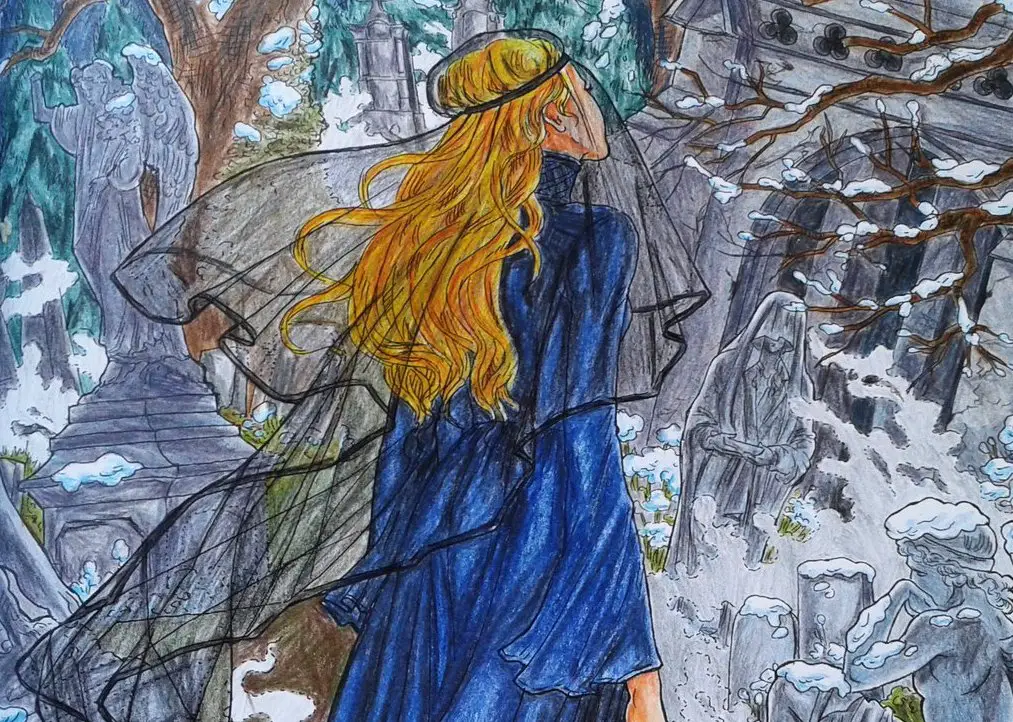For those of you tired of the young adult (YA) genre and its many flaws, several of which are pointed out here by Study Breaks writer Otis Roffman, I’d like to introduce you to the “Throne of Glass” series, a collection of eight novels and novellas featuring well-developed characters and a world full of both magic and wonder, and darkness and war. The first book, also titled “Throne of Glass,” stars a female assassin named Celaena Sardothien fighting for her life in a king’s competition.
Sarah J. Maas, the author of the series, actually started her career by publishing the first three chapters of “Throne of Glass” on Fiction Press, a global online fiction and poetry archive for up-and-coming authors. Since then, the series has received a great deal of public appreciation as well as several Goodreads Choice Awards.
If you’re looking for encouragement to read the “Throne of Glass” series, I’ve listed the top six reasons these books are and always will be my some of my favorites.
6. The World
Maas’ world in “Throne of Glass” is one of the most diverse fantasy realms I’ve had the pleasure of experiencing. Just as a taste, it features shapeshifters, witches, Fae, magic wielders, woodland creatures and demons. However, magic is not the main focus of the story. While the fantastical elements serve as an interesting add-on, “Throne of Glass” doesn’t make the mistake that many fantasy novels make in over-prioritizing magic.
The lands and cultures of the series are also gorgeous. One of my personal favorites is an empire in one of the later books called the Khaganate, which is based on Genghis Kahn and his empire and made up of entirely POC characters.
5. Writing Style
Maas has a gorgeous writing style that separates her from her YA author contemporaries. She has a natural rhythm that pulls the reader in and envelopes them in her world. I often find myself losing track of time and place while delving into her novels.
Maas’ writing style benefits from the exorbitant amount of time she spent creating the “Throne of Glass” world that Sardothien and her companions live in. Even outside of what she writes on the page, Maas thinks about everything down to the most minute detail, including the food a character might be eating or the changing seasons, which creates an all-encompassing experience for the reader.
4. Surprising Plot Twists
Another part of many YA novels that can be irritating is how predictable they can be. I often find myself working out the ending within the first few chapters of a book. In “Throne of Glass,” I was consistently unable to predict what was coming next, which made reading the books exciting. With the dramatic and mysterious plot, I had a difficult time putting the novels down. There were a few lines in the first novel that were seemingly throwaways but wound up having far-reaching consequences later in the series.
These thrilling plots allowed Maas to extend her series out. Sometimes when book plots are too simple, readers are disinclined to read more than a few books, but when it came to “Throne of Glass,” I found myself wishing for more than the eight novels Maas put out.
3. Realistic Relationships
One of my pet peeves in YA novels is how authors write about romance. Most writers make it clear who the love interest will be at the very start of the series and then revolve the plot, or at least the woman’s character arc, around that romance. Maas realized, however, the problems with romantic writing, and created more realistic expectations for the characters in her novels. Characters in “Throne of Glass” are not guaranteed to have the same lover for the entire length of the series, and the emotional repercussions of relationships are considered and discussed.
Plus, there are inspiring friendships and family relationships in “Throne of Glass.” Characters who previously hated each other become friends and readers see empowering female friendships, along with heartwarming family reunions. Maas also touches on familial issues and shows families that don’t fall under one stereotypical umbrella.
2. Acknowledgement of Real-World Problems
The “Throne of Glass” world is nowhere close to perfect, it includes real-world problems, including prostitution, PTSD, depression, anxiety, disabilities and abuse. Maas’ inclusion of these issues is uncommon in a genre that normally does not accurately represent these obstacles. Characters go through actual hardships in Maas’ novels and experience problems in the same way readers do.
Maas makes sure not to trivialize any matters in “Throne of Glass.” There are characters who spend several books getting over deaths or their traumatic pasts — there are no false pretenses about characters fighting their inner battles and emerging triumphant within days.
1. Incredible Female Characters
Sardothien is the world’s greatest assassin and possibly the strongest female character I’ve ever read. When asked what inspired Sardothien’s character in an interview, Maas said, “I think she was the product of my love for ‘Buffy the Vampire Slayer,’ ‘Kill Bill,’ Han Solo from ‘Star Wars’ and Disney princesses, as well as my desire to write/read a book where the heroine got to do all the ‘fun’ things that boys usually get to do: kick butt, kill monsters, save the world.”
Sardothien is everything I wish I could be — self-confident, highly intelligent and perfectly sarcastic. But despite Sardothien’s fierce attitude, Maas also shows readers Sardothien’s vulnerable side. THe protagonist lives her life unapologetically and shows real growth throughout the series, proving she is more than a one-dimensional character, an unfortunate hallmark of many female heroines in the YA genre.
There are also other incredible female characters. Without spoiling too much, some of the other women in this world include a former prostitute, a captive slave, a POC warrior, a heartless witch and a disabled heiress. One of my favorite scenes from all eight novels occurs in the final book, when Sardothien and all of her female friends walk through crowds cheering for their heroic deeds. That scene elegantly highlights the importance Maas places on the roles her female characters play in the “Throne of Glass” series.
I would highly encourage everyone to read the “Throne of Glass” series, even if you’re not typically into YA novels. The characters are nuanced, the problems faced in the book are real-world issues that readers might face themselves and the world itself is beautifully complex.
If you’ve already read “Throne of Glass,” you will probably love Maas’ other series, “A Court of Thorns and Roses.” That story exists in a world similar to that found in “Throne of Glass” and features even more complex characters and emotional plots.
And if you want to hear some of what inspires Maas to write, check out her Spotify (@therealsjmaas) for some amazing playlists with everything from movie soundtracks to Halsey songs.
















